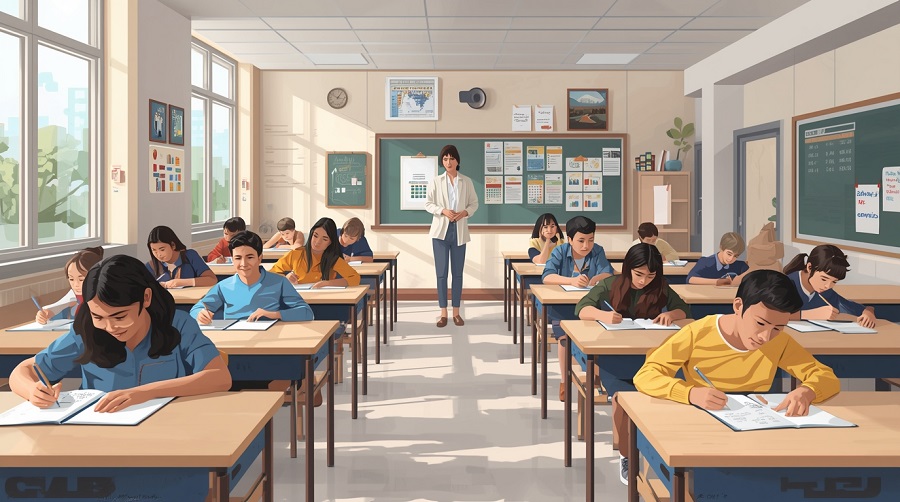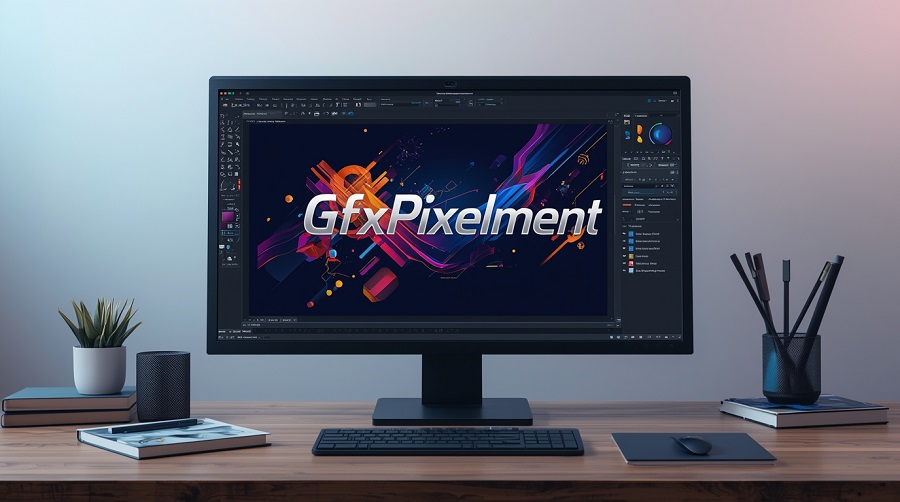Introduction to Classroom 15x
The education sector has always been one of the most dynamic and evolving industries in the world, constantly adapting to new societal needs, technologies, and learning methodologies. In recent years, there has been an increased push toward digital transformation and smart learning environments. This is where the concept of Classroom 15x comes into the spotlight. More than just a catchphrase, Classroom 15x represents a reimagined approach to teaching and learning where technology, collaboration, and personalized education converge. It is a forward-looking model that breaks the traditional mold of classrooms and emphasizes flexibility, interactivity, and innovation.
At its core, Classroom 15x isn’t just about high-tech tools—it’s about creating a learning environment where students can engage with content more meaningfully, teachers can harness technology to improve outcomes, and schools can prepare learners for the fast-changing global landscape. As we dive deeper into this concept, it becomes clear that Classroom 15x is not a temporary trend but a necessary evolution in the way we deliver education.
Understanding the Concept of Classroom 15x
Classroom 15x can be understood as an enhanced learning ecosystem that integrates advanced digital platforms, personalized learning experiences, and collaborative methodologies. The “15x” in the name often symbolizes multiplication, growth, and scalability—it implies that the classroom experience is not just incrementally better but exponentially more effective than traditional setups.
In a Classroom 15x model, the physical and digital boundaries of the classroom dissolve. Learning can happen inside a school, at home, or even in a virtual reality space where students collaborate from different parts of the world. It takes into account not only the delivery of academic content but also the development of critical skills such as creativity, problem-solving, adaptability, and communication.

Where traditional classrooms relied heavily on lectures, textbooks, and rigid schedules, Classroom 15x thrives on interactivity, real-time feedback, adaptive learning technologies, and inclusivity. This means every learner, regardless of background, gets the opportunity to learn at their own pace while still being part of a larger, connected environment.
The Evolution of Classrooms: From Chalkboards to 15x
To fully appreciate Classroom 15x, it’s essential to understand how far classrooms have come.
In the early days of formal education, classrooms were basic spaces equipped with chalkboards, wooden desks, and physical textbooks. Teaching was heavily one-directional, with the teacher serving as the sole source of knowledge and students as passive recipients. Over time, the introduction of whiteboards, projectors, and computers added new layers of interactivity.
The late 20th century saw the rise of digital tools, such as interactive smartboards, online assignments, and e-learning platforms. Then, the global COVID-19 pandemic accelerated the adoption of remote learning solutions, with video conferencing tools like Zoom and Microsoft Teams becoming central to education.
Classroom 15x represents the next evolutionary leap. It builds on these earlier innovations but pushes the boundaries further by emphasizing seamless hybrid learning, AI-driven personalization, gamification, immersive technologies, and data-driven insights. Instead of merely digitizing old methods, it redefines what teaching and learning can look like in the 21st century.
Key Features of Classroom 15x
1. Personalized Learning
One of the most defining aspects of Classroom 15x is its focus on personalization. Students no longer need to follow a one-size-fits-all curriculum. With advanced AI algorithms and adaptive learning platforms, the system identifies each learner’s strengths, weaknesses, and preferred pace. This allows teachers to tailor assignments, reading materials, and assessments to individual needs.
2. Hybrid and Flexible Models
Classroom 15x seamlessly blends in-person and online learning. Whether a student is sitting in a physical classroom, learning from home, or participating in a virtual space, the experience remains consistent. This flexibility ensures that education can continue uninterrupted under any circumstances.
3. Collaboration and Interactivity
Gone are the days of passive note-taking. Classroom 15x promotes real-time collaboration through digital whiteboards, group projects on cloud-based platforms, and interactive discussions. Students from different geographical locations can work together on the same project as if they were in the same room.
4. Immersive Technologies
Virtual reality (VR) and augmented reality (AR) are central to Classroom 15x. Imagine biology students virtually dissecting a frog in 3D space, or history students walking through ancient civilizations using VR headsets. These immersive experiences make learning engaging and memorable.
5. Data-Driven Insights
Teachers are equipped with dashboards that track student progress, engagement levels, and performance in real time. This data-driven approach helps educators intervene early when a student is struggling and adjust their teaching strategies accordingly.
Benefits of Classroom 15x
For Students
Students benefit the most from Classroom 15x as it empowers them to learn at their own pace, access global resources, and interact in ways that traditional classrooms could not support. Personalized content ensures no student is left behind, while gamified elements make learning enjoyable.
For Teachers
Teachers gain access to tools that reduce workload, automate assessments, and provide insights into student performance. Instead of spending hours grading papers, they can focus on creative teaching and one-on-one mentorship.
For Schools and Institutions
Institutions adopting Classroom 15x stand out as forward-thinking and adaptable. By embracing this model, schools can attract more students, improve outcomes, and prepare learners for the digital economy.
For Parents
Parents can track their child’s progress in real time, communicate more effectively with teachers, and ensure their children are receiving quality education that adapts to their unique learning style.
Classroom 15x and the Role of Technology
Technology is the backbone of Classroom 15x. Without innovations in AI, machine learning, VR/AR, and cloud computing, such a model would not be possible. However, it’s not just about adding gadgets—it’s about creating meaningful connections between tools and learning goals.
For example, AI tutors can answer student questions 24/7, virtual labs can provide hands-on science experiences without expensive equipment, and cloud platforms can store limitless educational content accessible anytime. The right use of technology transforms learning into an engaging journey rather than a mechanical process.
Challenges and Considerations in Implementing Classroom 15x
While the vision of Classroom 15x is exciting, it’s important to acknowledge potential challenges.
- Digital Divide – Not all students have equal access to reliable internet and modern devices. This can create inequality if not addressed properly.
- Teacher Training – Teachers need proper training to effectively use advanced tools and platforms. Without it, the potential of Classroom 15x cannot be fully realized.
- Cost of Implementation – Setting up the required infrastructure can be expensive, especially for underfunded schools.
- Privacy Concerns – With increased use of data and AI, ensuring student data privacy and cybersecurity becomes critical.
The Future of Classroom 15x
Looking ahead, Classroom 15x is likely to become the standard model for education rather than an exception. As technology continues to advance, classrooms will become even more immersive and intelligent. Concepts such as AI mentors, global virtual classrooms, and fully gamified learning systems are on the horizon.
Furthermore, the future classroom will be designed not just for academic excellence but also for developing life skills. Students will learn how to collaborate globally, adapt to fast-changing environments, and think critically about real-world issues. In this sense, Classroom 15x is not just about education—it’s about preparing the next generation for leadership in a digital-first world.
Conclusion
Classroom 15x is more than a futuristic vision—it’s a practical solution to the challenges of modern education. By embracing digital tools, immersive experiences, and data-driven insights, this model enhances learning outcomes and prepares students for the demands of a rapidly evolving world. While challenges such as cost, access, and training must be addressed, the potential benefits far outweigh the drawbacks.
In the coming years, schools that adopt Classroom 15x will be at the forefront of educational innovation, creating environments where learners are not only informed but also inspired. Just as the chalkboard once defined the classroom of the past, Classroom 15x is set to define the classroom of the future—interactive, personalized, and transformative.
FAQs about Classroom 15x
Q1: What does Classroom 15x mean?
Classroom 15x refers to an advanced, technology-driven model of learning that emphasizes personalization, collaboration, and innovation.
Q2: How is it different from traditional classrooms?
Unlike traditional classrooms that rely on rigid schedules and textbooks, Classroom 15x integrates AI, VR, and data-driven learning to make education more interactive and flexible.
Q3: Can Classroom 15x work in rural areas?
Yes, but it requires proper infrastructure. Schools need internet connectivity and digital devices for students to benefit fully from this model.
Q4: Does Classroom 15x replace teachers?
No, teachers remain central to the model. Technology supports and enhances their role rather than replacing it.
Q5: Is Classroom 15x expensive to implement?
Initial setup can be costly, but over time it reduces expenses related to physical textbooks, outdated equipment, and manual processes.



